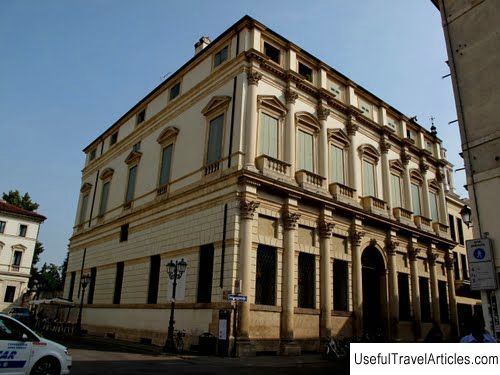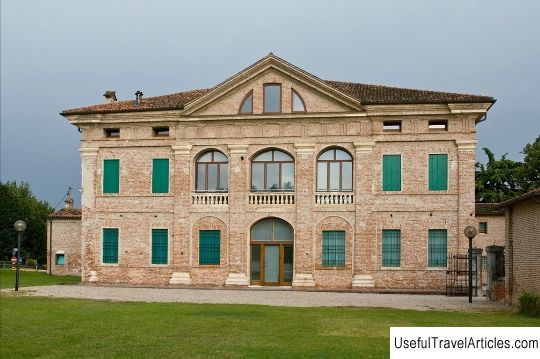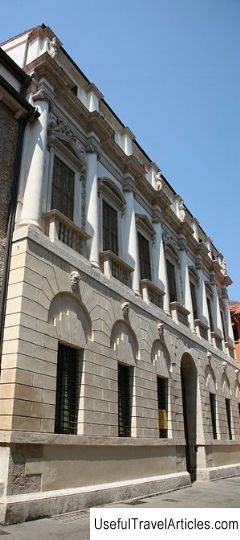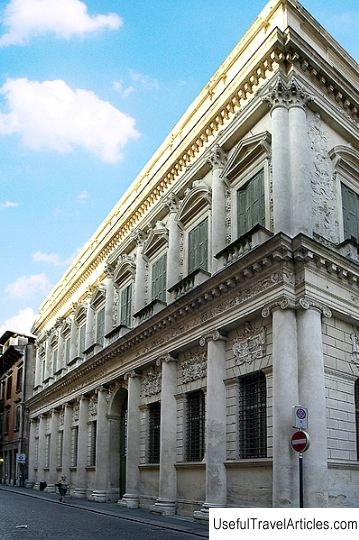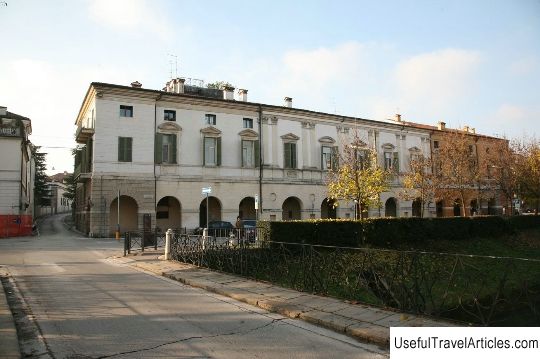Palazzo Thiene description and photos - Italy: Vicenza
Rating: 7,6/10 (1011 votes) 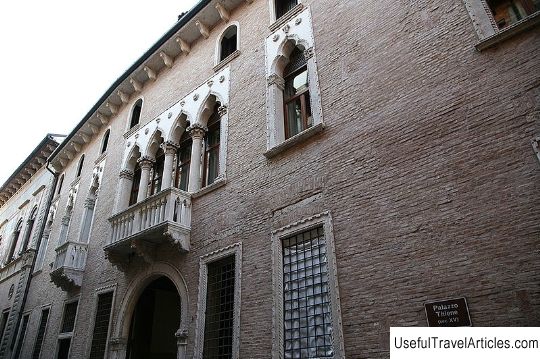
Palazzo Thiene description and photos - Italy: Vicenza. Detailed information about the attraction. Description, photographs and a map showing the nearest significant objects. The title in English is Palazzo Thiene. Photo and descriptionPalazzo Thiene is a 15-16th century palace in Vicenza, built for Marcantonio and Adriano Thiene. Probably, the creator of the palace project in 1542 was Giulio Romano, but already at the construction stage, in 1544, Andrea Palladio reworked it. In 1994, the palace was included in the list of UNESCO World Cultural Heritage Sites. Today it houses the headquarters of the bank and sometimes hosts exhibitions and cultural events. The construction of the original building in the Gothic style by Lodovico Thiene in 1490 was commissioned by the architect Lorenzo da Bologna. Its eastern facade, facing the Contra Porti district, was made of bricks, and Tommaso da Lugano worked over the portal, decorated with a triple pink marble window. In 1542, the Thiene brothers decided to reconstruct the 15th century family palace and turn it into a huge residence measuring 54 by 62 meters. According to their idea, the facade of the building was to face the main street of Vicenza - the current Corso Palladio. Wealthy, influential and sophisticated Marcantonio and Adriano Thiene were members of that aristocratic Italian society, whose members could easily move between the royal courts of Europe. That is why they needed an appropriate residence that would reflect their status and could receive the highest guests. Most likely, the experienced architect Giulio Romano worked on the Palazzo project (from 1533 he was at the Mantuan court of Gonzaga, with whom Thiene was in close relationship), and the young Palladio was responsible for its implementation. After the death of Romano in 1546, Palladio took over the construction management. The architectural elements of Palazzo Thiene, which are attributed to Romano and which are clearly alien to the Palladian style, are easily recognizable: for example, the four-column atrium is very similar to the atrium of Palazzo Te, despite the fact that Palladio changed its vaults. Romano was also responsible for the windows and facades of the lower floors, facing the street and the courtyard, while Palladio added his features to the entablature and capitals of the upper floors. Construction work, as mentioned above, began in 1542, but proceeded very slowly: the inscription 1556 was engraved on the outer facade, and 1558 on the facade of the inner courtyard. In 1552, he died in France Adriano Thiene, and subsequently, when Marcantonio Thiene's son, Giulio, became Marquis of Scandiano, family interests gradually shifted to Ferrara. As a result, only a small part of the grandiose Palazzo Thiene project was realized. Probably, neither the Venetian nor other Vicentine aristocratic families could afford to maintain such a personal kingdom in the very center of the city.      We also recommend reading Cathedral description and photos - Finland: Helsinki Topic: Palazzo Thiene description and photos - Italy: Vicenza. |
